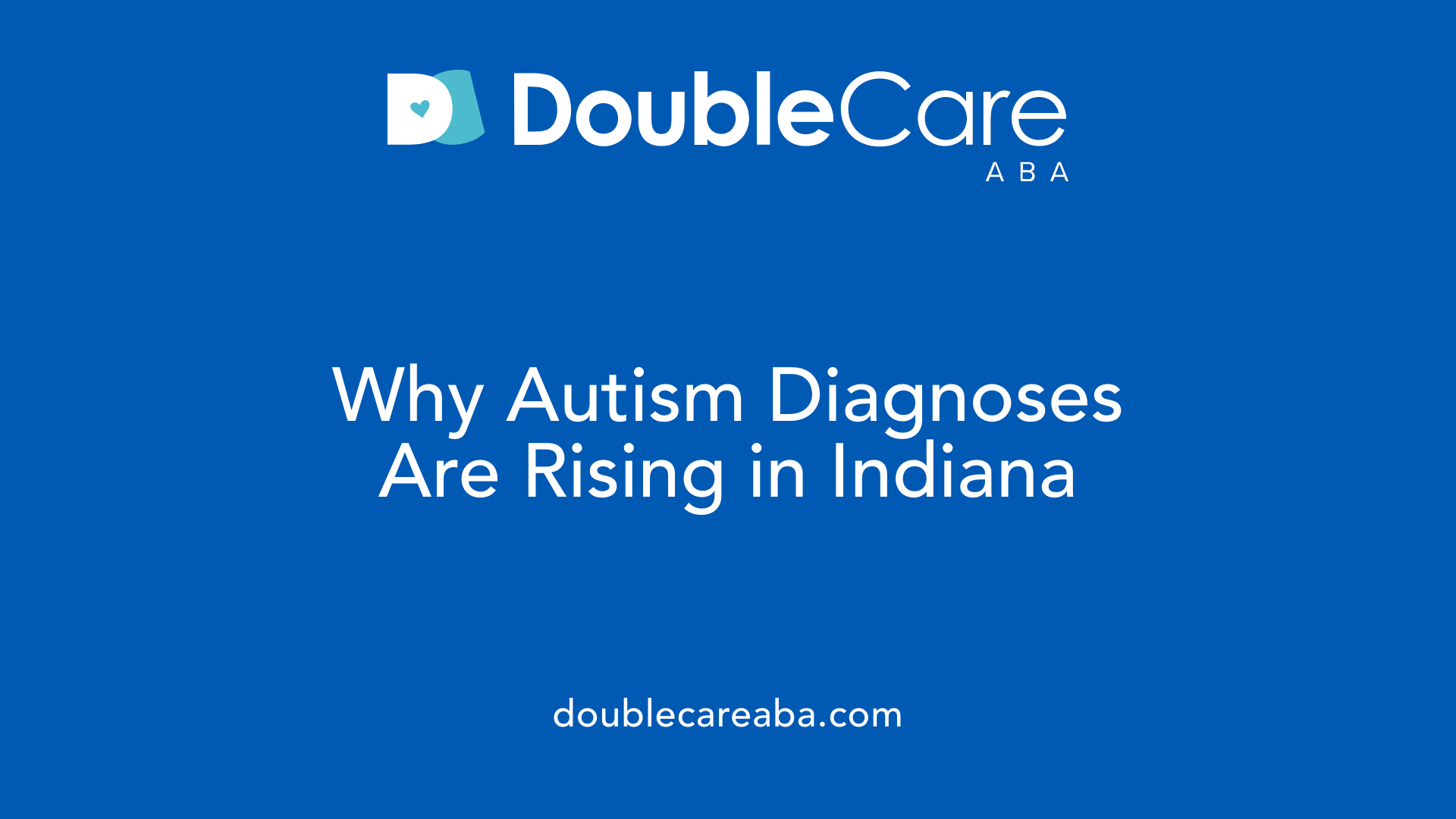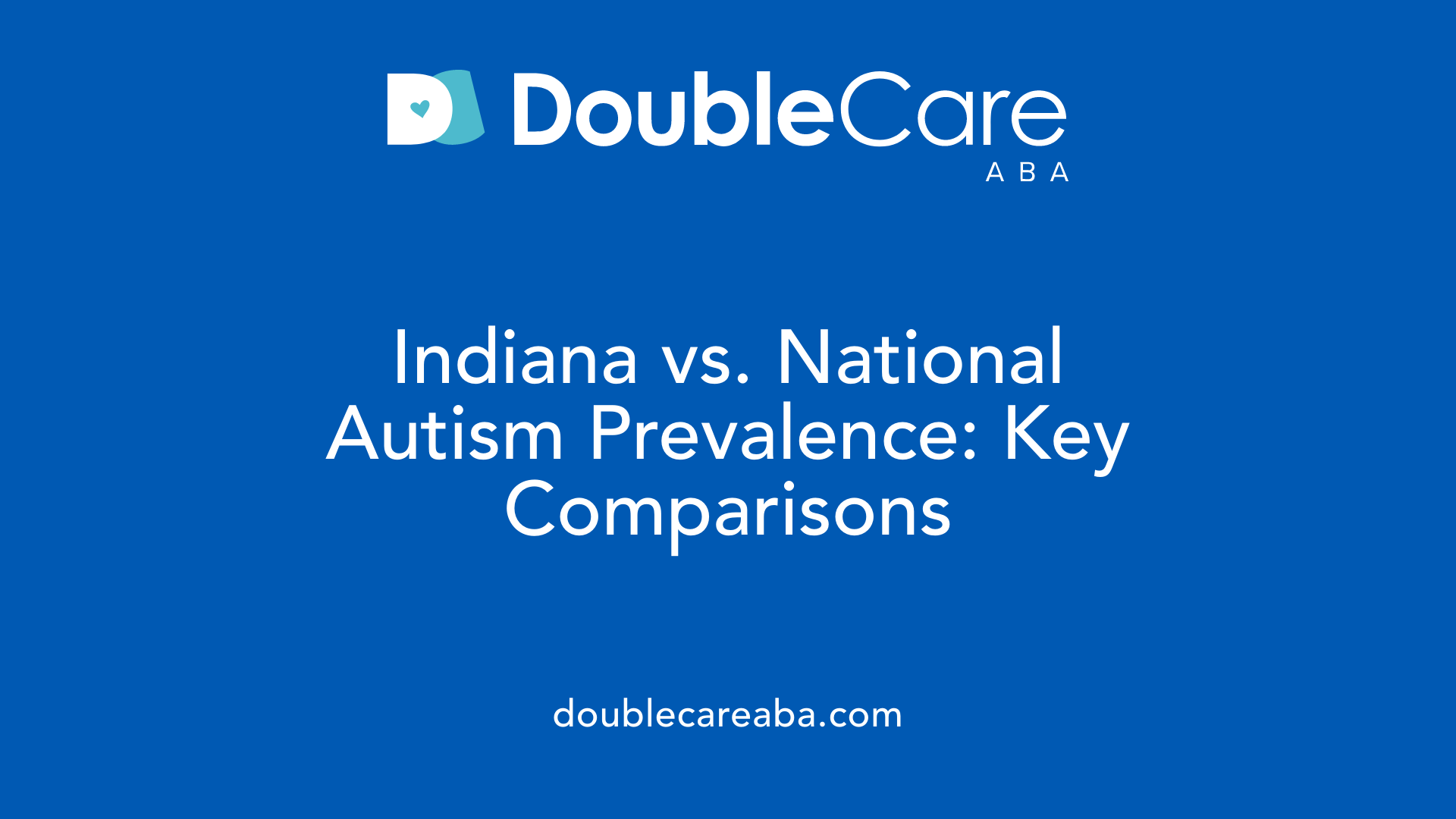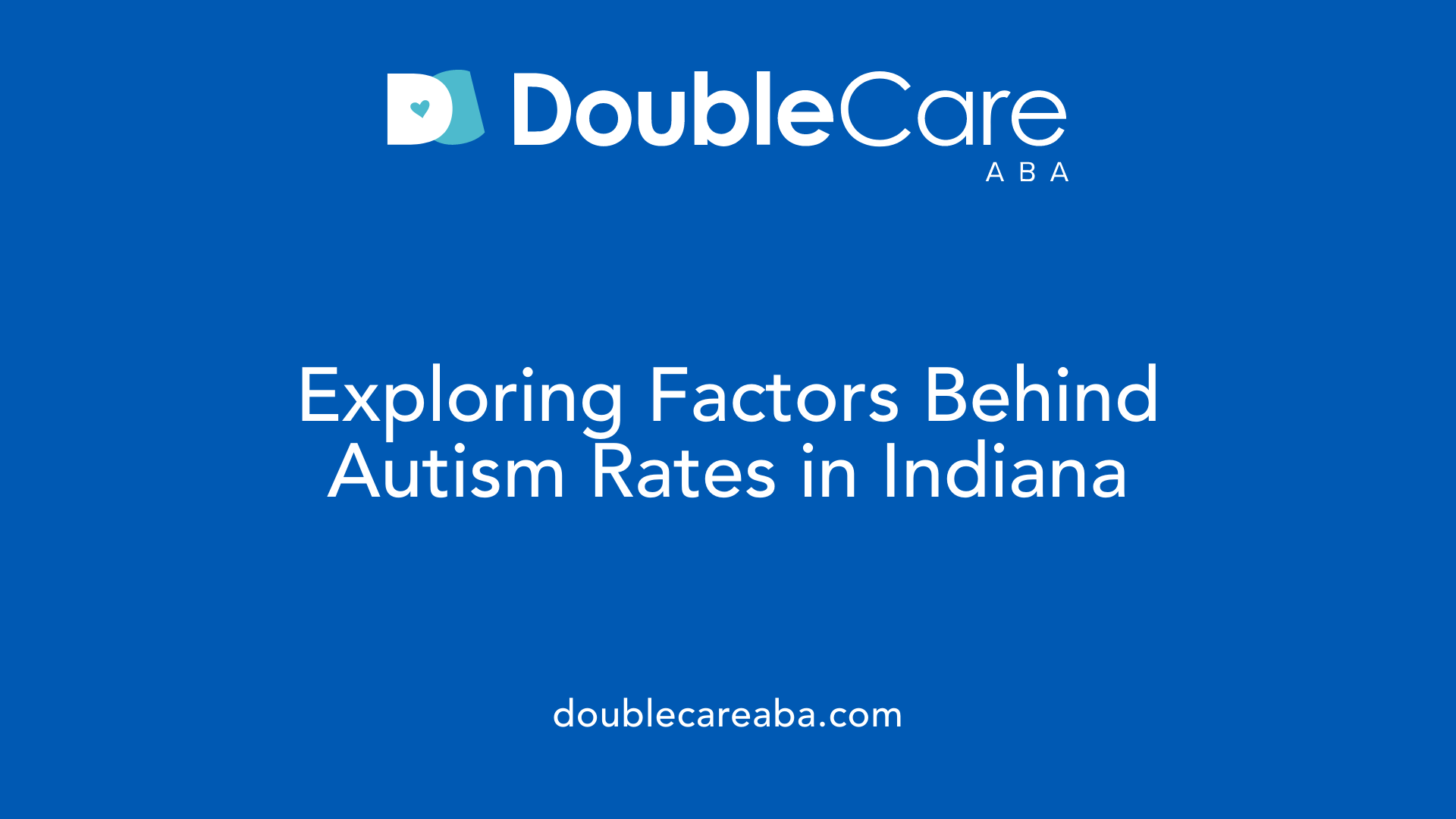A Growing Public Health Concern in the Heartland
Over recent years, autism spectrum disorder (ASD) has become an increasingly prominent focus within Indiana’s public health and educational systems. The rising prevalence has prompted extensive research, policy response, and community support efforts. This article explores the current autism rates in Indiana, compares them with national data, discusses contributing factors, highlights available resources, and considers regional differences across the state.
Current Autism Prevalence Rates in Indiana

What is the autism rate in Indiana?
The autism rate in Indiana is currently approximately 1 in 63 students, based on recent school data. This indicates an increasing trend compared to previous years, where the rate was about 1 in 66 students. During the 2022-2023 school year, around 18,817 students in Indiana were identified with autism spectrum disorder (ASD) through public school programs.
This rise in prevalence reflects broader national patterns, where the overall estimated autism prevalence in the United States is about 1 in 44 to 1 in 59 children, depending on the source and year. In Indiana, most children diagnosed with ASD receive services through public education, often with an Individualized Education Program (IEP). However, there is no statewide database that captures all individuals with ASD outside of the school system, so the actual number of people on the spectrum may be higher.
Recent trends in autism diagnosis in Indiana
The data from Indiana shows a gradual increase in autism diagnoses over recent years. While the trend was somewhat affected by the COVID-19 pandemic, which caused shifts in service delivery and diagnosis, the overall pattern continues upward. The average age at which children in Indiana are diagnosed is about 5.5 years, with most diagnoses happening around age 3.
Diagnosing autism early remains critical, as early intervention can significantly reduce lifelong care costs and improve outcomes. Despite these advances, disparities still exist, particularly among girls and children from Black and brown communities, who tend to be diagnosed later than their peers.
Number of students identified with autism in recent school years
In the 2022-2023 school year, nearly 19,000 students statewide were identified as having ASD. This figure is a slight increase from the previous year, aligning with the national trend of rising autism diagnoses.
Detailed data from the Indiana Department of Education indicates that autism continues to be the fourth most common disability category among children and youth in public schools. The average age of beginning services for these children was around 5 years old, with some receiving a diagnosis as early as age 2.
This upward trend emphasizes the importance of ongoing research, early screening, and improved access to diagnosis and support services for children across Indiana, ensuring that all children on the spectrum receive appropriate care and educational opportunities.
Comparing Indiana's Autism Rates to National Averages

How does autism prevalence in Indiana compare to national rates?
Autism spectrum disorder (ASD) prevalence in Indiana is about 1 in 59 children, according to recent data from the Indiana Department of Education and the CDC. This rate is slightly lower than the national average, which is estimated at approximately 1 in 31 children among 8-year-olds. This difference highlights some variations in how autism is identified and reported in different regions.
Over the last year, Indiana's autism identification rate has shown a small decline, from 1 in 66 to 1 in 63 children. Despite this slight change, Indiana’s figures stay within close range of national estimates. The CDC reports a rising trend in autism prevalence nationwide, with rates increasing from 1 in 150 to about 1 in 44 over the past 17 years. This upward trend is also reflected, to some degree, in Indiana data.
It's important to note that national data often rely on large-scale surveillance systems like the CDC’s Autism and Developmental Disabilities Monitoring (ADDM) network, which track children at specific ages. Indiana’s data, on the other hand, mainly come from school child counts and demographic reports, which may vary in scope and methodology.
While Indiana's prevalence remains slightly below the national average, both indicate that autism affects a significant segment of children across the United States. Variations in figures can stem from differences in testing, diagnosis age, access to services, and reporting practices. Overall, the data underscore that autism is a widespread condition, impacting diverse populations across both Indiana and the nation.
The substantial increase in autism diagnoses over recent decades has led to ongoing discussions about potential environmental, genetic, and societal factors. Both Indiana and nationwide data point to the importance of early detection and intervention to support children with ASD effectively.
Factors Influencing Autism Rates in Indiana

What factors influence autism prevalence rates in Indiana?
Autism prevalence in Indiana is shaped by a combo of genetic, environmental, and diagnostic factors. Large-scale research shows genetics play a major role, with inherited variations and mutations increasing risk. Environmental influences such as prenatal exposure to toxins like heavy metals, air pollution, and maternal health issues also impact early brain development.
In addition, local patterns of diagnosis and awareness are crucial. As awareness about autism grows, more children are identified earlier, which inflates reported rates. Changes in diagnostic criteria and screening practices have contributed to the rising numbers.
Overall, the increase in autism diagnosis stems from a nuanced interaction of inherited biological factors and environmental exposures, compounded by improvements in detection and awareness. This complex web highlights the importance of ongoing research to better understand and address autism in Indiana.
| Factor Type | Examples & Impact | Notes |
|---|---|---|
| Genetic Factors | Inherited mutations, family history | Account for a significant portion of autism risk |
| Environmental Factors | Toxins during pregnancy, pollution, birth issues | Potentially influence early brain pathways |
| Diagnostic Practices | Screening, awareness, criteria changes | More children identified due to improved detection |
| Socioeconomic Factors | Access to healthcare, education | Affect timely diagnosis and support |
The interplay of these factors makes autism a complex condition that continues to evolve in diagnosis patterns across Indiana.
Resources and Support Systems for Autism in Indiana
Community organizations and advocacy groups
Indiana hosts several groups dedicated to supporting individuals with autism and their families. The Autism Society of Indiana stands out as a leading organization, providing educational programs, sensory-friendly resources, and advocating for essential services such as Medicaid for those on the spectrum. Similarly, The Arc of Indiana works to promote inclusion and provide tailored support for individuals with developmental disabilities.
Other groups like Down Syndrome Indiana extend their services beyond Down syndrome, offering resources and awareness campaigns inclusive of autism needs. These organizations also focus on public education, increasing awareness to reduce stigma and foster understanding within communities.
Educational and developmental support programs
Early detection and intervention are crucial for better outcomes. Indiana’s Early Autism Evaluation Hub is designed to facilitate timely diagnosis, often as early as age 2, which can significantly reduce lifelong care costs and improve developmental prospects.
School-based programs such as Head Start and On My Way Pre-K serve children with and without disabilities, emphasizing inclusive early childhood education. The FUSE initiative supports transitions into school systems, ensuring children receive appropriate educational and developmental services tailored to their needs.
Most children diagnosed with ASD in Indiana are enrolled in public schools, with nearly half attending full-time general education classrooms. The Indiana Institute on Disability and Community contributes to these efforts by researching best practices and developing innovative supports suited for children and youth with autism.
Medical and therapy services available
Medical support for autism in Indiana includes diagnostic assessments by specialists familiar with childhood developmental disorders. Once diagnosed, children and adults can access a variety of therapies such as speech, occupational, and behavioral therapy to support communication, social skills, and daily functioning.
Statewide, community support programs administered by the Indiana Bureau of Developmental Disability Services provide residential, employment, and day programs that foster independence and social integration. The availability of these services varies across counties, but overall, Indiana strives to create a comprehensive network of care for its autism population.
| Resource Type | Notable Programs/Organizations | Description |
|---|---|---|
| Advocacy and Support | Autism Society of Indiana, The Arc of Indiana | Provide information, community support, and advocacy efforts. |
| Early Diagnosis and Education | Early Autism Evaluation Hub, Head Start, On My Way Pre-K | Facilitate early screening, diagnosis, and inclusive preschool education. |
| Medical and Therapeutic Services | Local clinics, speech, occupational, and behavioral therapists | Offer diagnostic, therapeutic, and ongoing support services for individuals on the spectrum. |
| Community and Residential Supports | Indiana Bureau of Developmental Disability Services | Provide residential, employment, and day programs to support independence and community involvement. |
Indiana continues to expand its autism support infrastructure, emphasizing early intervention, comprehensive education, and community integration to improve quality of life for individuals with autism and their families.
Regional and Demographic Variations within Indiana
Are there regional differences within Indiana regarding autism prevalence?
Within Indiana, some regional disparities in autism prevalence have been observed, but comprehensive data remain limited. The overall rate of autism identification among school-aged children has increased over recent years, reaching approximately 1 in 63 students during the 2022-2023 school year, according to data collected by the Indiana Department of Education.
However, the state does not maintain a detailed, statewide database that tracks the total number of individuals on the autism spectrum outside of school-based settings. This gap means that regional variations are not precisely documented across all communities.
Most available data focus on students who have an Individualized Education Program (IEP) or are enrolled in special education services. These figures may vary regionally because of differences in diagnosis practices, access to healthcare, and the availability of diagnostic and support services. Areas with better access to healthcare and awareness tend to have higher reported rates.
While specific regional figures within Indiana are scarce, the data indicate some level of disparity. Urban areas often report higher identification rates, likely due to greater resources and awareness. Conversely, rural regions might experience underdiagnosis due to limited access.
In conclusion, although clear, detailed regional differences are not fully documented, the existing evidence suggests some disparities exist. More extensive research and a comprehensive statewide database are necessary to better understand and address these variation.
Looking Forward: Addressing Autism Through Continued Research and Resources
The rising prevalence of autism in Indiana reflects broader national trends and underscores the importance of ongoing research, early detection, and comprehensive support services. While current data provide valuable insights, especially within the education system, significant gaps remain regarding statewide surveillance and understanding regional differences. Continued investment in resources, public health strategies, and community awareness will be essential to meet the needs of individuals with autism and their families. Promoting early diagnosis and intervention remains a key focus, aiming to reduce lifelong impacts and improve quality of life for those affected.
References
- Prevalence of Autism Spectrum Disorders in Indiana: Articles
- Facts & Statistics - Autism Society of Indiana
- [PDF] Indiana Autism Spectrum Disorder Needs Assessment
- Prevalence of Autism Spectrum Disorders in Indiana
- [PDF] Children & Youth with Special Healthcare Needs (CYSHCN) - IN.gov
- Autism Rates by State 2025 - World Population Review
- Indiana Autism Rates Create Debate on Causes, Stigma - WIBC
- Prevalence of Autism Spectrum Disorders in Indiana: Articles















